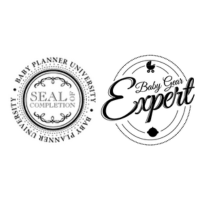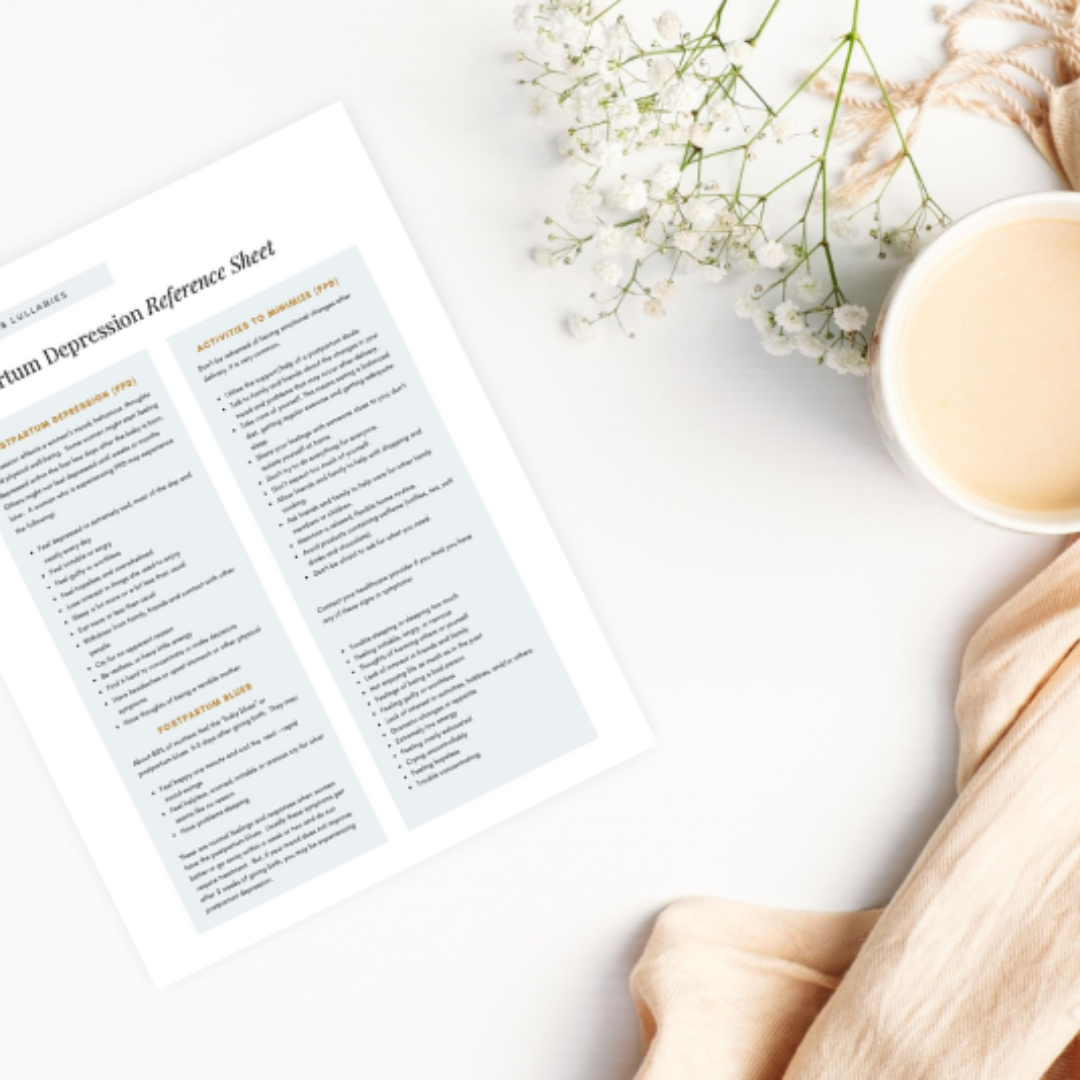Breastfeeding can be overwhelming in the first few weeks, but can also be a wonderful time of bonding for you and your new baby. Today I’m sharing 10 tips (+ a bonus tip) for new moms and dads that I’ve acquired after working with literally thousands of new families as a Mother-Baby nurse.
My #1 priority is a happy mom and happy baby. So, if breastfeeding just isn’t your thing or you find it to be far more challenging than you ever imagined, that’s ok. This is a safe-zone. Questions are encouraged, and honesty is key. Hopefully these tips will help you relax and understand more about breastfeeding so you can make informed decisions for you and your baby.
{We are a participant in the Amazon Services LLC Associates Program, an affiliate advertising program designed to provide a means for us to earn fees by linking to Amazon.com and affiliated sites. To learn more about affiliate links, click here!}

1. Be Realistic & Patient With Yourself & Your Baby
First things first, be realistic and patient with yourself and your baby. It can take a bit of time to figure out breastfeeding, and even if you’ve breastfed before, each baby is unique and different. Just because your first took to the breast easily, your second may not.
You can be the most prepared mom ever, and then when you dive head-first into breastfeeding your baby, realize that it’s not what you expected. That’s ok. Show yourself some grace. This is a huge commitment, and your body has just gone through something quite wonderful but also quite exhausting and taxing.
Also, sometimes, your baby may run into some “snags in the road” that make breastfeeding a little more difficult, like low blood sugars, tongue-tie, or jaundice. Some conditions that newborns develop require more volume and more frequent feedings. So, be patient with yourself and your baby. The key is a thriving, growing baby and a mama who is relishing in the newborn stage with her new little family.
2. Breastfeeding Can Be Painful
Yep, you read that right. Sorry, to be a Debbie Downer, but it’s true. Sometimes (often times) breastfeeding can be painful. I’d dare say that typically you don’t have a little human munching at our breast every couple of hours, am I right? So, during the first few weeks of breastfeeding, your nipples may be in for quite a surprise as they adapt to your infant learning to feed.
The best thing to practice early on, is proper holds and latching with your little one. The more areola (the darker circle of skin around the nipple) that you can get into your baby’s mouth, the better. It almost seems crazy, doesn’t it? But, with a deeper latch, your nipple will come in contact with your baby’s soft palette inside his mouth which makes breastfeeding more comfortable. A shallow latch, on the other hand, causes your nipple to rub on baby’s hard palette which causes some pain, blistering, and creasing.
I always encourage my patient’s to use the first 24 hours, when newborns are typically sleepy, to practice the different holds (cross-cradle, football, etc) and have baby practice getting a deep latch. By day 2, baby will be hungrier and wanting to nurse more frequently. If you spend that first day practicing, you and your baby will be ready for the day 2 & Day 3 of cluster feeding when your baby will be more vigorously sucking. Hopefully all of that practice will prevent any painful experiences. Hooray!
3. Breastfeeding Isn’t Always Easy
I tell my patients that “breastfeeding is the most natural way to feed your baby, but it doesn’t always come naturally”. Breastfeeding can take a lot of practice, especially for new moms. It can be hard not knowing how much your baby is getting, since our breasts don’t come with a gauge telling us how much baby’s fed…darn! There’s a lot of trial and error with the beginning days of breastfeeding, and that’s perfectly normal.
Just remember: as long as baby is growing, pooping and peeing, and seems content…he/she is fine! My patients always seem enthused when baby has their first poopy diaper full of meconium (baby’s first stool) because I explain to them that mom’s first milk (called colostrum) has a laxative property that helps push that thick, tarry poop out. This is always a positive sign to those wondering parents questioning if their baby’s getting enough to eat.
For more truths about feeding your baby, click here!
*It is “normal” for newborns to lose weight in the first few days, and most pediatricians watch to make sure the baby is back to birth weight by 2 weeks. It’s also normal for your baby’s diaper changes to begin to slow down after he’s passed all of the meconium. We typically watch for at least 1 stool a day, and want wet diapers to match how many days old the baby is until 7 days. Then, we watch for at least 7 wet diapers a day, to make sure your baby’s not dehydrated. But, your pediatrician may have other thoughts and concerns. So, this information is not to take the place of good, sound medical advice by your trusted pediatrician.

4. Stock Up On Necessities
Before baby arrives, stock up on necessities that you’ll need to help breastfeeding work better at home. Below, I’ve listed some of my patient’s favorite products to get them through the first few weeks of breastfeeding. Some of these things help soothe sore nipples, help make pumping easier, and help you increase your milk supply.
Also, remember, that breast pumps are now generally covered by insurance, so have your OBGYN/Midwife write you a prescription for a breast pump so that you can get your pump either before you deliver your baby, or shortly afterward. Some hospitals even have medical supply right in their facility who can deliver it to your hospital room.
Usually these scripts cover the two most common breast pumps, Medela and Spectra. I’ll let you research which one you think you’d like best. There are also other amazing breast pumps too, like the hands-free Willow pump, that’s not typically covered by insurance at this time, but is HSA/FSA eligible! Woohoo!
What You’ll Need The First Few Days of Your Breastfeeding Journey…
- Latch Assist– The Latch Assist helps draw out your nipples if they are inverted, making latching more difficult. I call it the “nipple plunger”. It’s a magical little tool you’ll definitely want if you have flatter nipples.
- Hydrogel Pads– These are extra soothing for sore, cracked nipples. Keep them in the fridge for an extra soothing experience.
- Nipple Cream– Nipple Cream is always a must for new breastfeeders.
- Nursing Bra– I’ve heard wonderful things about the nursing bras and lounge wear from Kindred Bravely.
- Nursing Tops
- Nursing Pads– To help prevent leakage onto your new gorgeous Kindred Bravely bras and lounge wear!
- Breast Pump
- Nursing Pillow– A nursing pillow, like the Boppy, helps you prop baby up and support baby while your breastfeeding giving you a little more freedom with your hands.
- Lactation Tea– There are about 100 billion recipes on Pinterest for various lactation teas, cookies, etc. to help increase your milk supply. I’ve also heard eating figs does the trick also, or enjoying a can of beer.
- Formula- Now don’t kill me with this suggestion…remember, this is a safe zone. You may want to have a can of formula around and some clean bottles, just in case your baby is losing his mind one night and you just can’t breastfeed another second. It’s better to be prepared, then to be sending your hubby out to the store in the middle of the night, you get what I’m saying?

5. Get Ready For A Busy Feeding Schedule
Whoever said that “all babies do is sleep” has never been on a maternity ward at 3 a.m. Ha! It’s true that baby’s do need a lot of sleep, but they also need to eat quite frequently too, which can make for some sleepless nights for a new mom and dad.
The first few weeks of breastfeeding can be downright exhausting. Newborns need to eat every 2-3 hours at a minimum, and often times newborns are more awake at nighttime. Now, before you lost your mind, there is a reason behind that. Your breastfeeding hormones are highest at night, so you baby will take advantage and feed more frequently during the wee hours of the early morning.
What breastfeeding in the first few weeks actually looks like….
It’s important to get up and feed your baby every 2-3 hours until your milk comes in (which can take up to 7 days!!) and/or until your baby has gained all of his/her weight back and is back to birth weight (usually happens by 2 weeks old). So, that means you may have a few weeks of broken sleep, where you will get 2 hour naps here and there. In a few months, you can focus on sleep-training and hopefully get back to getting a few hours of sleep at a time. But, it may be awhile before that happens.
The best way to combat these tired nights is with teamwork and patience. Just remember, this too shall pass, but it may be a complete blur. This is why the American Academy of Pediatrics recommends rooming in, where your newborn sleeps in his/her own safe sleep environment (crib or bassinet) so that it’s easier to wake up and feed your baby and then put him/her back to sleep.
Just remember: when breastfeeding at night, sit up, move all pillows out of the way, maybe get a glass of water, get on social media & binge-watch Instagram stories….anything to stay awake and create a safer environment for your baby in case you do doze off while holding your baby. It does happen.
For more tips on how to prevent SIDS (Sudden Infant Death Syndrome) click here!
6. Watch For Early Feeding Cues
Early feeding cues include rooting (where your baby opens his mouth, and looks like he’s attempting to latch on anything and everything that’s close to his face), smacking his lips, and trying to suck on his hand. It’s important to catch these early feeding cues, and offer a feeding before baby gets too upset because it’s harder to get him/her to latch when he’s out of control angry.
Ideally, if you notice these early feeding cues and he’s close to a feeding, you’d get up and use the bathroom (because a full bladder combined with the contracting of your uterus during breastfeeding can be painful and crampy), wash your hands, check baby’s diaper, and then get situated in a chair or bed for feeding.
If your baby seems to be constantly trying to suck even after a good feeding, he may just want to suck for comfort. You can introduce a pacifier or use your (washed) finger to allow him to suck until he falls asleep. Sometimes babies just want to suck for comfort after a feeding because of gas pains or to help soothe them to sleep, and it’s not necessarily a sign he’s hungry again 10 minutes after feeding.
7. Take Care of Yourself
It’s so, so important to take care of yourself. It’s easy to get lost in taking care of a helpless human being, but you matter too! Drink plenty of water, go for walks around the block with baby to get some fresh air, and eat nutritious meals. You’ve just been through one of the most incredible experiences of your life, and your body has done amazing things.
Give yourself permission to care for you. Have a helper give your baby some pumped breast milk with a bottle so you can take an extra-long nap, or take a long shower in order to feel human again. It’s ok to ask for help and to take of you as well!
8. Prepare for Common Problems & Learn How To Recognize Them
There are some common problems that can come with breastfeeding that you need to know about so you can recognize them and combat them before they get too out of control.
Blocked Milk Duct
A clogged milk duct is when the milk is backed up inside the duct, which can make pumping and nursing excruciatingly painful. If the blocked milk duct isn’t resolved quickly, it can lead to bigger issues, such as inflammation—a condition known as mastitis—and an all-out milk stoppage, which in turn can lead to infection.
For more information on how to treat and recognize a blocked milk duct, click here!
Mastitis
“Mastitis merely means inflammation of the breast. You don’t have to be breastfeeding to get it, though that’s usually the case, and it can either come with an infection or not. Either way, the breast is red, swollen and sore. Dawn A., a mom who suffered from mastitis, describes it as “The worst pain ever—literally worse than my 46-hour, all-natural, drug-free childbirth!” ~The Bump
For more on how to prevent and treat mastitis, click here!
Thrush
“Thrush is a fungal infection of the mouth caused by a type of yeast called candida. It’s characterized by white patches on the tongue, inside of the cheeks, roof of the mouth and lips. Thrush doesn’t commonly appear in healthy adults, but those with weakened immune systems—especially babies younger than 6 months old—are particularly susceptible to the infection. While it doesn’t pose any significant danger for little ones, thrush in babies can make sucking and swallowing painful, so it’s important to treat the infection promptly.” ~ The Bump
Click Here to read more about how to recognize and treat thrush.
9. Learn About Your Baby
The first few weeks of baby’s life, you’ll be learning all about your particular baby. We can come at you with statistics and what works for other couples, but you know you and your baby best. You’ll eventually learn which positions your baby likes best, what he/she acts like when his belly is full, and you’ll know exactly what each cry and coo means.
Don’t worry. You may not be an expert from Day 1 on your baby, and that’s perfectly normal. But, you do have a pretty strong maternal instinct. So, if you think there is something your baby needs or something isn’t right, listen to your gut. You were chosen to be this baby’s mama for a reason!
10. Take a Breastfeeding Class
One of the best ways to prepare for breastfeeding is to take a breastfeeding class and prenatal class. I go over a lot more about breastfeeding a newborn in my Mommy Masterclass: Baby’s Beginning which walks you through the postpartum phase and first few days with your baby.
If you are looking for a breastfeeding class in particular though, I’d recommend Lactation Link, a group of breastfeeding courses taught by certified lactation consultants. My Mommy Masterclasses as well as Lactation Link’s courses are taught online and can be completed in the comfort of your own home in your pj’s.
For a complete list of my recommended online pregnancy and baby courses, click here!
11. Find a Certified Lactation Consultant
You may need an extra set of hands and an expert eye in those first few weeks of breastfeeding. So, I think it’s additionally important to find a certified lactation consultant in your area that can do a home visit. The hospital I work at has lactation consultants available to assist during our patient’s hospital stay, as well as a breastfeeding clinic our patient’s can visit if they run into problems when they go home.
Check with your hospital to find out what services they provide to help you learn how to breastfeed, or simply google “lactation consultants near me”. You can also ask friends and family for recommendations.
Sign up for my FREE Baby Bootcamp to learn more ways you can prepare to have your baby today. It’s basically the first module of my online prenatal class, Baby’s Beginning, which will give you free access to my online classroom where you can see if an online prenatal course is right for you. Also, check out my free downloadable Baby Guide below that’s filled with 22 practical tips for new moms! You don’t want to miss out on these freebies.













One Comment
I am glad that I found this article well documented and very informative.
I want to share how I treated Yeast and Candida Infection,
maybe it will be useful to someone: https://bit.ly/3cq12iO
Thank you and keep going, you do a great job!!